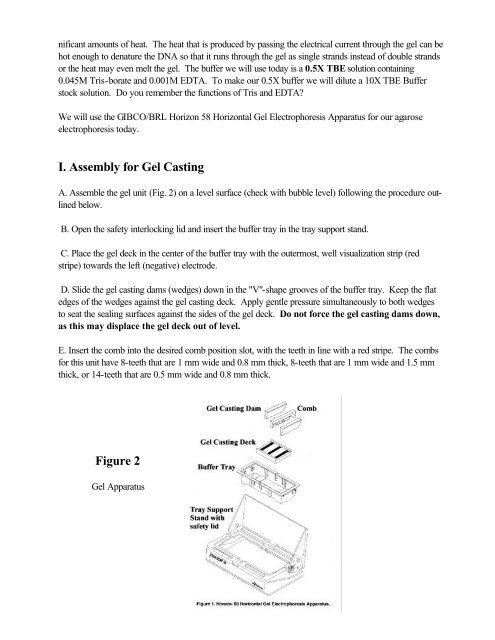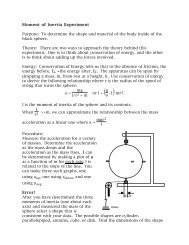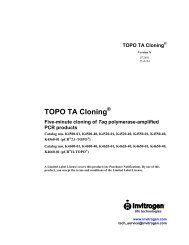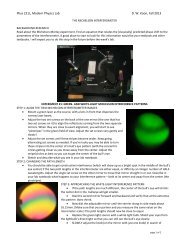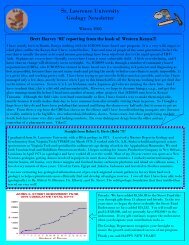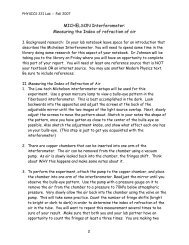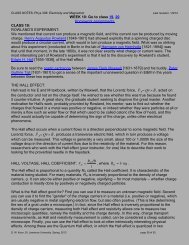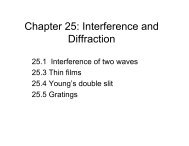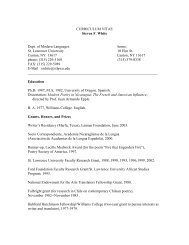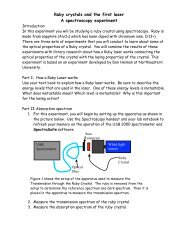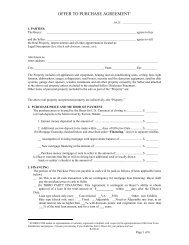Agarose Gel Electrophoresis
Agarose Gel Electrophoresis
Agarose Gel Electrophoresis
Create successful ePaper yourself
Turn your PDF publications into a flip-book with our unique Google optimized e-Paper software.
nificant amounts of heat. The heat that is produced by passing the electrical current through the gel can behot enough to denature the DNA so that it runs through the gel as single strands instead of double strandsor the heat may even melt the gel. The buffer we will use today is a 0.5X TBE solution containing0.045M Tris-borate and 0.001M EDTA. To make our 0.5X buffer we will dilute a 10X TBE Bufferstock solution. Do you remember the functions of Tris and EDTA?We will use the GIBCO/BRL Horizon 58 Horizontal <strong>Gel</strong> <strong>Electrophoresis</strong> Apparatus for our agaroseelectrophoresis today.I. Assembly for <strong>Gel</strong> CastingA. Assemble the gel unit (Fig. 2) on a level surface (check with bubble level) following the procedure outlinedbelow.B. Open the safety interlocking lid and insert the buffer tray in the tray support stand.C. Place the gel deck in the center of the buffer tray with the outermost, well visualization strip (redstripe) towards the left (negative) electrode.D. Slide the gel casting dams (wedges) down in the "V"-shape grooves of the buffer tray. Keep the flatedges of the wedges against the gel casting deck. Apply gentle pressure simultaneously to both wedgesto seat the sealing surfaces against the sides of the gel deck. Do not force the gel casting dams down,as this may displace the gel deck out of level.E. Insert the comb into the desired comb position slot, with the teeth in line with a red stripe. The combsfor this unit have 8-teeth that are 1 mm wide and 0.8 mm thick, 8-teeth that are 1 mm wide and 1.5 mmthick, or 14-teeth that are 0.5 mm wide and 0.8 mm thick.Figure 2<strong>Gel</strong> Apparatus


